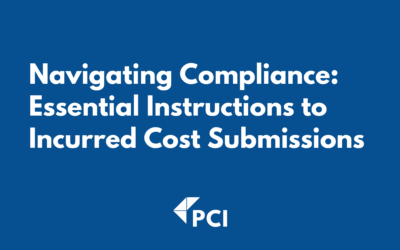Writing down, is one of the easiest things companies, especially small companies and can do to support and explain the compensation paid to employees. Even if you don’t intend to change anything about the methodology, just having it formally documented and accessible to the necessary people can keep you in compliance with FAR and keep you from having compensation questioned.
FAR 31.205-6(a)(3) states that, the compensation must be based upon and conform to the terms and conditions of the contractor’s established compensation plan or practice followed so consistently as to imply, in effect, an agreement to make the payment. Proving that you are following a practice to this level of consistency is very difficult when you have multiple nuances within each employment agreement. Writing down the company’s methods and the potentially negotiable elements of compensation within that company is much faster and simpler than trying to convince an auditor that you’re consistent. Even just from the perspective that the Head of HR, CEO, and auditor alone will all have three differing views on consistency.
When establishing a compensation plan and writing a policy, keep in mind a few influencing factors:
- Compensation needs to be reviewed annually
- Identify the surveys, market indices, and other benchmarking tools that will be utilized
- Establish who is responsible for reviewing compensation by job category and identify factors that could play into the planning
- Consider a range of compensation by job class or labor category, in lieu of more finite written policies
- Make it known how and what is necessary to fall at a lower or higher amount within the established range, e.g. time with the company, higher education, continuing education, etc.
Additionally, FAR 31.205-6(f)(1) specifies that bonuses and other incentive compensation are only allowable if there is a written plan, an established practice consistent enough to imply an agreement, or a documented agreement with each employee that was paid a bonus and included in the indirect rate pool. Again, my perspective is that the easiest way to comply with FAR and substantiate the costs if they were to be audited, is to have a written plan from the get-go. This makes the situation much more controllable by the company and makes auditor subjectivity less variable. It also outlines procedures to be followed across the board as the company grows and potentially more people are involved in the bonus process.
When establishing a bonus plan and writing a policy, keep in mind a few influencing factors:
- Bonuses are only allowable if an agreement/plan was established prior to an employee performing the work
- The plan must identify who is eligible for bonuses, when bonuses are paid, and how bonus amounts will be calculated
- A basis of why the employee is receiving a bonus must be documented for every employee and every bonus, e.g. a standard form, written supervisor reviews, annual performance matrix, etc. This is required documentation whether the company chooses to enter into individual agreements or chooses to have a standing policy.
- Profits cannot be disguised as costs by distributing them as bonuses, including formal profit-sharing plans. It is important to emphasize employee performance metrics that determine bonuses when writing a plan and not to discuss or identify company performance as a factor to narrow the gap on subjectivity even further.
Learn more about Compensation and Policy Audits here in our recent on demand webinar.




